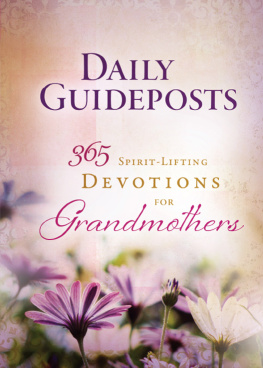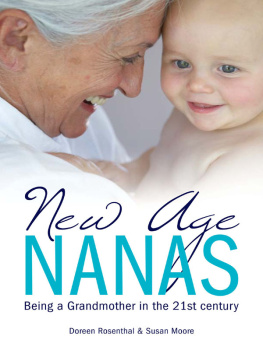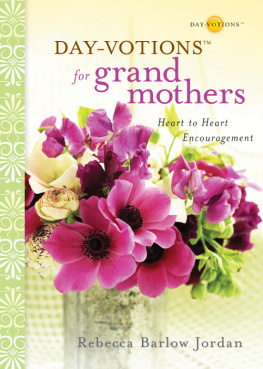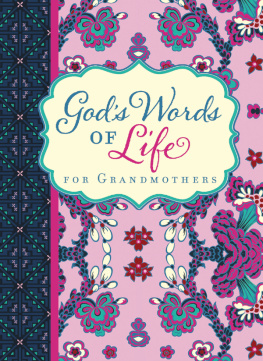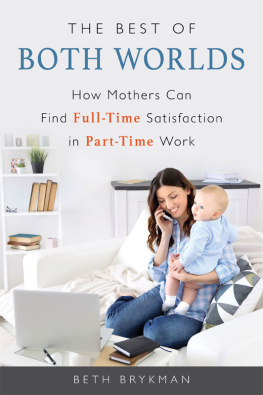Thank you for buying this ebook, published by NYU Press.
Sign up for our e-newsletters to receive information about forthcoming books, special discounts, and more!
Sign Up!
About NYU Press
A publisher of original scholarship since its founding in 1916, New York University Press Produces more than 100 new books each year, with a backlist of 3,000 titles in print. Working across the humanities and social sciences, NYU Press has award-winning lists in sociology, law, cultural and American studies, religion, American history, anthropology, politics, criminology, media and communication, literary studies, and psychology.
GRANDMOTHERS AT WORK
Grandmothers at Work
Juggling Families and Jobs
Madonna Harrington Meyer
NEW YORK UNIVERSITY PRESS
New York and London
www.nyupress.org
2014 by New York University
All rights reserved
References to Internet websites (URLs) were accurate at the time of writing. Neither the author nor New York University Press is responsible for URLs that may have expired or changed since the manuscript was prepared.
Library of Congress Cataloging-in-Publication Data
Harrington Meyer, Madonna, 1959
Grandmothers at work : juggling families and jobs / Madonna Harrington Meyer.
pages cm
Includes bibliographical references and index.
ISBN 978-0-8147-2923-6 (cloth : alk. paper) ISBN 978-0-8147-2947-2 (pbk.: alk. paper)
1. Work and familyUnited States. 2. GrandmothersUnited States. I. Title.
HD4904.25.H385 2014
331.408460973dc23
2013045558
New York University Press books are printed on acid-free paper, and their binding materials are chosen for strength and durability. We strive to use environmentally responsible suppliers and materials to the greatest extent possible in publishing our books.
Manufactured in the United States of America
10 9 8 7 6 5 4 3 2 1
Also available as an ebook
to Jeff
to Sam, Maureen, and Ellen
CONTENTS
PREFACE
I never really had a grandmother growing up. My mothers mom, Kathryn, died decades before I was born. My mom was just 18. My fathers mom, Anna, died when I was very young. I have only two memories of Anna. In one, she was at our home for a holiday. The house was filled with family and I had asked Grandma, whose hair was always in a tight white bun, if I could brush her hair. She allowed me to do so and while I was probably nowhere near gentle enough, I was enthralled by her long and silky fine hair. In the other memory, we were visiting her at the nursing home. My dad, mom, and several of my siblings were all there chatting with her and she had little idea who we were. At one point she encouraged my mother to marry her son, something she had already done decades earlier, sending the kids, but not our parents, into peals of laughter. I would have liked to have a grandma around much more than I did. My mom would have, too. She would have liked to have some grandmotherly help given that she bore seven children within a fast-paced 10 years. Though she raised us without a helpful grandmother, she became an incredibly helpful and loving grandmother as we had our own children. My siblings and I have been enormously grateful as we watched the joy between our mom and our children deepen each year. We see just how much we missed as we were growing up.
A longing for a grandmother had little to do with why I started this project, however. I began thinking about this project when I was going up for full professorship and my three children were in middle school and high school. I have often described parenting while working full-time as living life within a tightly secured bungee cord. Every minute of every day is accounted for as my husband, Jeff, and I trade off who will teach, write, shuttle kids, help with homework, start the laundry, prepare dinner, walk the dog, and every other thing imaginable. In my minds eye, our children were nearing graduation and we were nearing an empty nest. I was imagining the bungee cord loosening until it perhaps disappeared altogether. I thought that Jeff and I were about to be sprung free.
Then I went to a conference at the Russell Sage Foundation in New York City and I heard over a dozen women professors, 10 to 15 years my senior, talking at length about how much time and effort they devoted to their grandchildren. They loved their grandkids, and were happy to help, but were feeling the pinch as they were asked by their adult children to use vacation time, travel time, sick time, free time, and even some work time, to help with newly arriving and young grandchildren. What they were describing sounded to me a lot like a bungee cord that was at times fairly tight. I knew all about younger mothers juggling work and children; I had not really considered the lives of middle-aged women juggling work and grandchildren. This was a stage I had not seen coming.
I pondered the project for well over a year and then nearly did not do it at all, save for a conversation with my dear colleague Suzanne Mettler, Professor of Political Science at Cornell. She talked about poor, single women at her church who were also quite tied down by the incredible task of juggling work and caring for grandchildren. I am indebted to her for her insights and encouragement. I knew that as long as I made sure that the sample was diverse, including women of all classes, races, marital statuses, and regions of the country, I would be able to portray grandmothers at work.
There are many grandmothers who do not work, and there are many working grandmothers who do not take care of their grandchildren. This book addresses neither. This book focuses on working grandmothers who care for their grandchildren. How do they juggle their work and carework responsibilities?
ACKNOWLEDGMENTS
This research was partially supported by the Syracuse University Center for Aging and Policy Studies, with funding provided through grant number P30-AG034464 from the National Institute on Aging. I am indebted to many friends and colleagues who helped me find grandmothers who were working, caring for their grandchildren, and willing to be interviewed. You know who you are and you know how much I appreciate your assistance. I cannot name names here as it might undo my efforts at keeping the grandmothers identities confidential. I am grateful to my amazing graduate students with whom I have had the good fortune to work: Chantell Frazier for assisting with some of the interviews; Yan Liu for analyzing the Health and Retirement Survey (HRS) data; and Ynesse Abdul-Malak and Jessica Hausauer for editing, and commenting on, the entire manuscript.
I am grateful to my mom, Anne, and sisters, Maura and Rose, and my dear friends Karen and Margaret, who helped me in numerous ways during my travels for this book. My husband and I are enormously grateful to his parents, Lyle and Jeanne Meyer, grandparents extraordinaire, who cared for our children many times over the decades so we could go to conferences and take highly treasured vacations. I am grateful to Suzanne Mettler and Jill Quadagno for helping me keep the big picture in focus and for reading portions of this work. I am grateful to Jeanne, Jeff, Ellen, and Maureen Meyer for reading the entire manuscript. Nice to have such smart relatives! I am especially indebted to the 48 women whose stories I tell in this manuscript. I appreciate the efforts of everyone at NYU Press, particularly Alexia Traganas, Caelyn Cobb, and my wonderful editor, Ilene Kalish. And for all of the joy they have given me along the way, I am most grateful to my husband, Jeffrey, and to our three children, Ellen, Maureen, and Sam. A few of the grandmothers quotes already appeared in my chapter, US Grandmothers Juggling Work and Grandchildren, in


![Madonna Harrington Meyer - Gerontology: Changes, Challenges, and Solutions [2 Volumes]](/uploads/posts/book/134454/thumbs/madonna-harrington-meyer-gerontology-changes.jpg)
